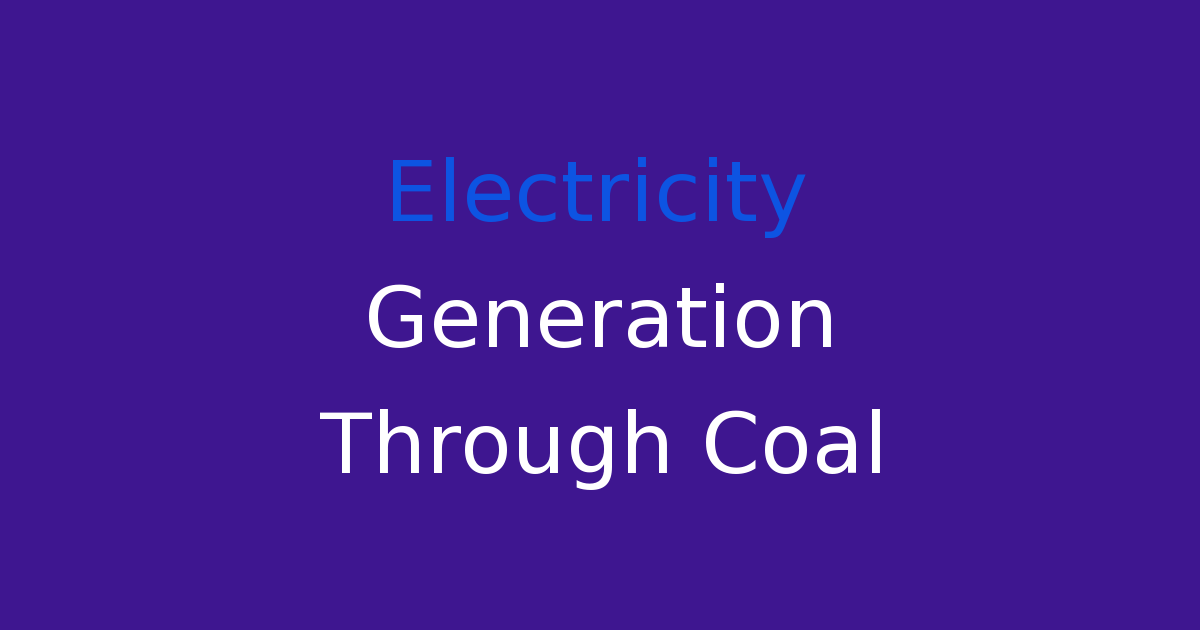Electricity generated by burning coal.
Introduction
Electricity generation is a critical aspect of modern society, with coal being one of the most commonly used sources of energy for this purpose. In India, where the demand for electricity continues to grow rapidly, coal plays a significant role in meeting the energy needs of the country. However, the existing system of electricity generation through coal is not without its drawbacks, prompting the need for a more efficient and sustainable solution.
Problem Statement
While coal-fired power plants have been a reliable source of electricity generation for many years, they are also associated with various environmental and health concerns. The burning of coal releases harmful pollutants into the atmosphere, contributing to air pollution, climate change, and respiratory diseases. In addition, the mining and transportation of coal can have detrimental effects on the environment, such as deforestation, habitat destruction, and water contamination.
Existing System
The current system of electricity generation through coal involves the burning of coal in a boiler to produce steam, which is then used to drive a turbine connected to a generator. This process is known as thermal power generation and is widely used in India and other countries around the world. While this method is effective in producing large quantities of electricity, it is also inefficient and polluting.
Disadvantages
- Environmental Pollution: Coal-fired power plants are major contributors to air pollution, releasing sulfur dioxide, nitrogen oxides, particulate matter, and carbon dioxide into the atmosphere.
- Resource Depletion: The extraction of coal contributes to the depletion of natural resources and can have negative impacts on local ecosystems.
- Health Risks: The emissions from coal combustion are harmful to human health, leading to respiratory diseases, cardiovascular problems, and premature death.
Proposed System
In order to address the limitations of the existing system, a proposed solution is to implement advanced technologies such as carbon capture and storage (CCS) and ultra-supercritical power plants. CCS involves capturing carbon dioxide emissions from coal-fired power plants and storing them underground, preventing them from entering the atmosphere. Ultra-supercritical power plants operate at higher temperatures and pressures, increasing efficiency and reducing emissions.
Advantages
- Environmental Sustainability: The proposed system of electricity generation through coal with CCS and ultra-supercritical power plants is more environmentally sustainable, reducing emissions and mitigating climate change.
- Efficiency: The use of advanced technologies improves the efficiency of coal-fired power plants, resulting in higher electricity output and lower fuel consumption.
- Health Benefits: By reducing air pollution and greenhouse gas emissions, the proposed system has the potential to improve public health and quality of life.
Features
The key features of the proposed system include:
- Carbon Capture and Storage: The implementation of CCS technology allows for the capture and storage of carbon dioxide emissions, reducing the environmental impact of coal-fired power plants.
- Ultra-Supercritical Power Plants: The use of ultra-supercritical power plants improves efficiency and reduces emissions, making coal-fired electricity generation more sustainable.
- Renewable Energy Integration: The integration of renewable energy sources such as solar and wind power with coal-fired power plants can further enhance sustainability and resilience of the energy system.
Conclusion
In conclusion, the existing system of electricity generation through coal in India and other countries has significant drawbacks in terms of environmental pollution, resource depletion, and health risks. However, by implementing advanced technologies such as carbon capture and storage and ultra-supercritical power plants, it is possible to improve the efficiency and sustainability of coal-fired power plants. The proposed system offers numerous advantages, including environmental sustainability, efficiency, and health benefits. By making use of these technologies and features, it is possible to transition towards a more sustainable and resilient energy system that meets the growing demand for electricity while minimizing its environmental and social impacts.

